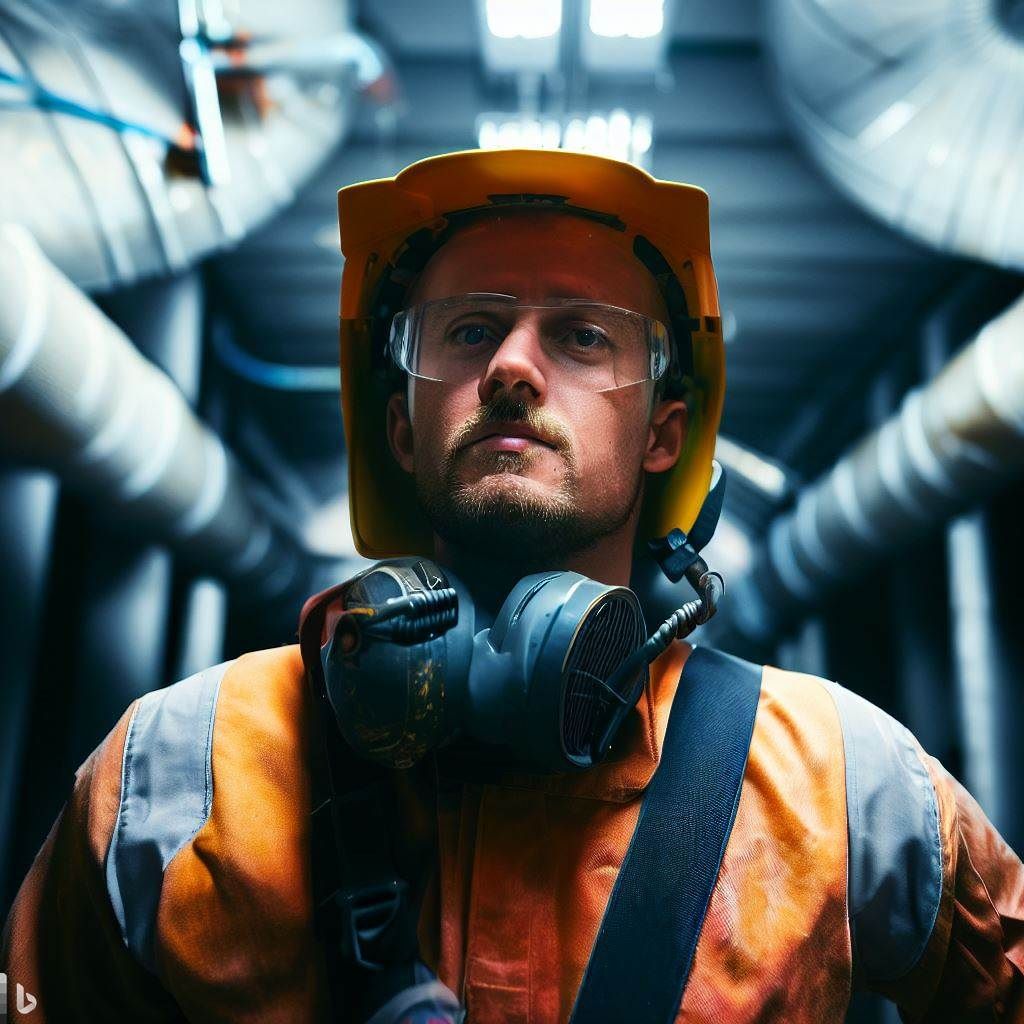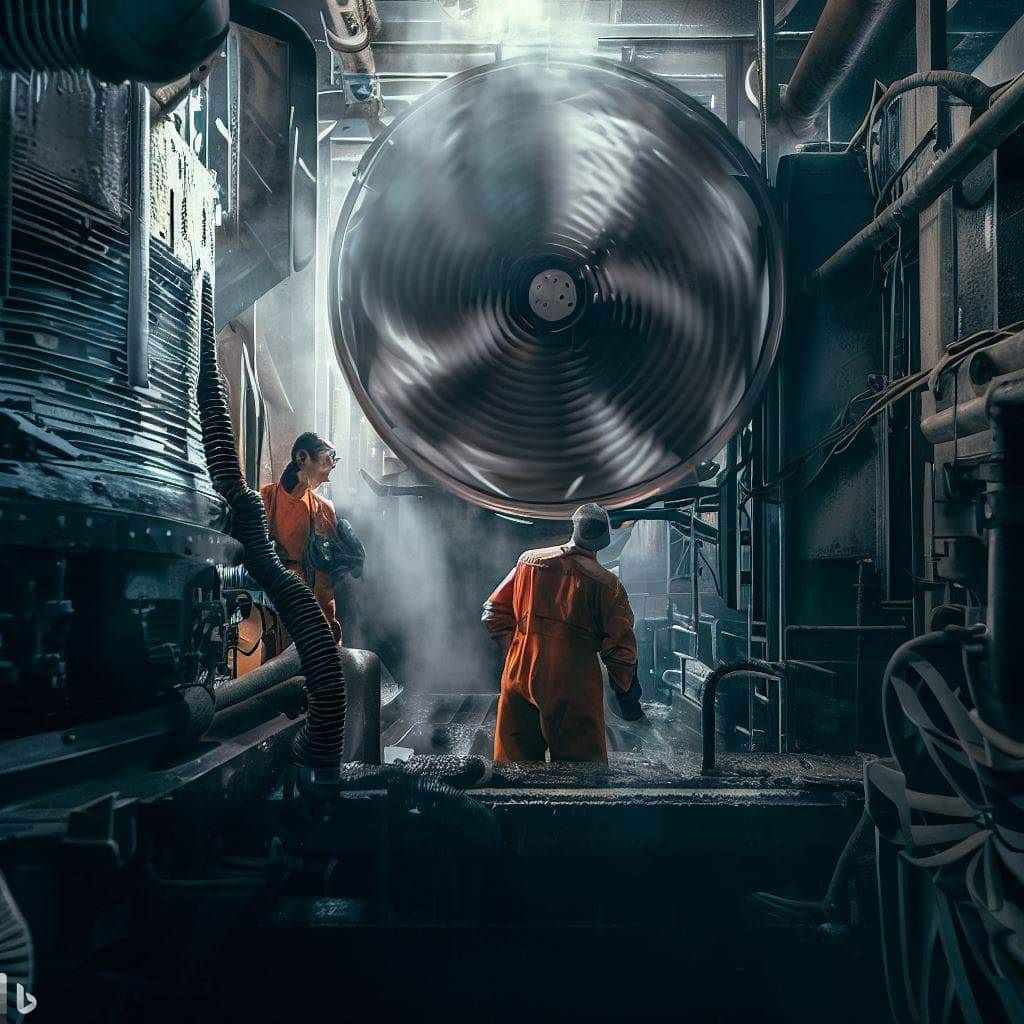Maximizing Safety and Efficiency: A Comprehensive Guide to Confined Space Ventilation Equipment
Confined spaces pose a significant risk for workers, as they can be hazardous due to dangerous gases, insufficient oxygen levels, or the potential for engulfment. That’s where confined space ventilation equipment comes into play. This vital equipment is designed to provide workers with the necessary airflow, ensuring a safe and healthy working environment. This comprehensive guide will discuss different types of confined space ventilation equipment, factors to consider when choosing the right equipment, and tips for maximizing safety and efficiency.
As an experienced worker in confined spaces, I have seen first-hand the importance of proper ventilation in ensuring the safety of my fellow workers. This article aims to share my knowledge and experience to help you make informed decisions regarding selecting, using, and maintaining confined space ventilation equipment. Let’s begin by understanding the nature of confined spaces and the hazards they present.
Understanding confined spaces and their hazards
Confined spaces are areas with limited access, not designed for continuous human occupancy, and large enough for workers to enter and perform work. These spaces are in various industries, including construction, manufacturing, mining, and utilities. Examples of confined spaces include tanks, silos, pipelines, tunnels, and manholes.
There are several hazards associated with confined spaces. One common hazard is the lack of proper ventilation, which can lead to the accumulation of toxic gases or a deficiency of oxygen. In some cases, the atmosphere in a confined space can become flammable or explosive due to combustible gases or dust. Engulfment hazards, such as when a worker becomes trapped or buried in a confined space by materials like sand, water, or grain, can also occur. Additionally, physical hazards, such as falls, entrapment, or contact with mechanical or electrical equipment, can pose a risk to workers.

Importance of proper ventilation in confined spaces
Proper ventilation is crucial for maintaining a safe atmosphere in confined spaces. It helps prevent the accumulation of hazardous gases, maintains adequate oxygen levels, and controls temperature and humidity. You can significantly reduce the risk of accidents, injuries, and fatalities by utilizing confined space ventilation equipment. Furthermore, proper ventilation can improve worker comfort and productivity and help protect the integrity of the structure or equipment within the confined space.
Types of confined space ventilation equipment
a. Fans and blowers
Fans and blowers are essential components of confined space ventilation systems. They are responsible for moving air in and out of the confined space, ensuring a continuous supply of fresh air, and removing contaminated air. Two primary types of fans and blowers are used for confined space ventilation: axial fans and centrifugal blowers.
Axial fans are designed to move large volumes of air at relatively low pressures. They are ideal for ventilating confined spaces with minimal obstructions and straight duct runs. Centrifugal blowers, on the other hand, can generate higher pressures and are better suited for spaces with multiple bends, turns, or long duct runs.
b. Ducting and hoses
Ducting and hoses transport air between the fan or blower and the confined space. They come in various sizes, materials, and configurations, depending on the specific requirements of the ventilation system. Flexible ducting is commonly used for confined space ventilation due to its ease of installation and the ability to maneuver around obstacles. It is crucial to select the appropriate diameter, length, and material of the ducting to ensure optimal airflow and prevent the collapse of the duct under pressure.
c. Air monitoring devices
Air monitoring devices are essential for ensuring the safety of workers in confined spaces. These devices measure the levels of oxygen, toxic gases, and combustible gases within the confined space, alerting workers when conditions become hazardous. Some air monitoring devices can also control the operation of ventilation equipment, automatically adjusting the airflow based on the measurements. It is crucial to select an air monitoring device suitable for the specific gases and conditions in the confined space.
Factors to consider when choosing confined space ventilation equipment
When selecting confined space ventilation equipment, several factors must be considered to ensure the safety and efficiency of the ventilation system. These factors include the confined space’s size and shape, the contaminants’ type and concentration, and the number of workers present.
Additionally, consider the power source for the ventilation equipment. Fans and blowers can be powered by electricity, compressed air, or gasoline, each with advantages and limitations. Electrical fans and blowers are the most common due to their ease of use and availability of power sources. Still, they may not be suitable for spaces with flammable or explosive atmospheres. In such cases, air-powered or explosion-proof fans and blowers should be used.
Tips for maximizing safety and efficiency with confined space ventilation equipment
To maximize safety and efficiency when using confined space ventilation equipment, consider the following tips:
- Proper equipment selection: Ensure that the chosen equipment is appropriate for the specific requirements of the confined space, taking into account factors such as size, shape, contaminants, and power source.
- Correct positioning: Position fans and blowers to ensure optimal airflow within the confined space. Placing the fan or blower at the space’s entrance is best, directing fresh air inwards and allowing contaminated air to be exhausted.
- Continuous monitoring: Use air monitoring devices to monitor the atmosphere within the confined space, ensuring that conditions remain safe for workers.
- Regular maintenance: Perform regular maintenance on your confined space ventilation equipment to ensure optimal performance and prevent equipment failure.
- Training and certification: Ensure that all workers using confined space ventilation equipment are adequately trained and certified, as local regulations require.
Proper maintenance and inspection of confined space ventilation equipment
Regular maintenance and inspection of confined space ventilation equipment are crucial for ensuring the safety and efficiency of the system. This includes checking for damage or wear on fans, blowers, ducting, and hoses and ensuring that air monitoring devices are functioning correctly and calibrated as required.
Develop a maintenance schedule based on the manufacturer’s recommendations and your specific equipment usage. Keep accurate records of all maintenance and inspection activities to help identify potential issues and ensure compliance with local regulations.
Confined space ventilation equipment training and certification
Training and certification for workers using confined space ventilation equipment are essential to ensure safety and properly operate the equipment. Many jurisdictions have specific requirements for confined space training, including hazard recognition, ventilation equipment operation, air monitoring, rescue procedures, and personal protective equipment.
Ensure that all workers entering or working in confined spaces receive the appropriate training and certification and maintain their training records.

Top manufacturers and suppliers of confined space ventilation equipment
Several manufacturers and suppliers specialize in confined space ventilation equipment, offering various products to suit various requirements. Some of the top manufacturers and suppliers include:
- Allegro Industries
- Euramco Safety
- Air Systems International
- Schaefer Ventilation
- Ramfan
- Super Vac
When selecting a manufacturer or supplier, consider factors such as product quality, customer support, and replacement parts and accessories availability.
Conclusion and next steps for optimizing confined space safety
In conclusion, confined space ventilation equipment plays a crucial role in ensuring the safety and health of workers in confined spaces. By understanding the different types of equipment available, considering the factors that influence equipment selection, and following best practices for equipment use and maintenance, you can significantly reduce the risks associated with working in confined spaces.
Now that you have a better understanding of confined space ventilation equipment take the next steps to optimize safety in your workplace:
- Assess your confined spaces and ventilation needs.
- Research and select the appropriate ventilation equipment for your specific requirements.
- Train and certify workers who will be using the equipment.
- Develop and implement a maintenance and inspection schedule for your ventilation equipment.
- Continuously monitor and improve your confined space ventilation practices.
Following these steps can help ensure a safer and more efficient working environment for all workers in confined spaces.
Frequently Asked Questions:
Q: What are confined spaces?
A: Confined spaces are areas with limited access, not designed for continuous human occupancy, and large enough for workers to enter and perform work. Examples of confined spaces include tanks, silos, pipelines, tunnels, and manholes.
Q: Why is proper ventilation important in confined spaces?
A: Proper ventilation is crucial for maintaining a safe atmosphere in confined spaces. It helps prevent the accumulation of hazardous gases, maintains adequate oxygen levels, and controls temperature and humidity.
Q: What are the types of confined space ventilation equipment?
A: The confined space ventilation equipment types include fans and blowers, ducting and hoses, and air monitoring devices.
Q: What factors should be considered when choosing confined space ventilation equipment?
A: Factors to consider when choosing confined space ventilation equipment include the confined space’s size and shape, the contaminants’ type and concentration, and the number of workers present.
Q: How can safety and efficiency be maximized with confined space ventilation equipment?
A: To maximize safety and efficiency when using confined space ventilation equipment, consider proper equipment selection, correct positioning of fans and blowers, continuous monitoring using air monitoring devices, regular maintenance of equipment, and training and certification of workers using the equipment.
